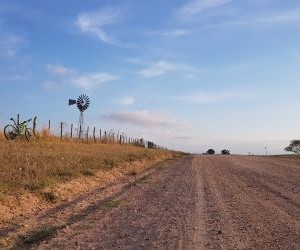Discover the most important cycling safety accessories every rider should have, from helmets to visibility gear, for safer and more confident rides.
HOW DO I ADJUST MY NUTRITION FOR DIFFERENT TYPES OF RIDES?
Cycling demands change with every type of ride, and nutrition should adapt accordingly. Long endurance rides, high-intensity intervals, and recovery spins each place unique stress on the body, requiring different fueling strategies. Properly aligning nutrition with ride type not only improves performance but also accelerates recovery and reduces the risk of fatigue. This article explores how to adjust nutrition before, during, and after various ride formats, offering practical examples for different scenarios. Whether training for races, commuting, or enjoying weekend adventures, understanding nutrition periodization ensures that every pedal stroke is fueled for purpose.

Fueling for endurance rides
Endurance rides lasting several hours require sustained energy availability. The goal is to preserve glycogen stores while promoting fat oxidation. Without careful fueling, riders risk hitting the dreaded “bonk,” where energy levels crash, and performance collapses.
Pre-ride nutrition
A carbohydrate-rich meal 2–4 hours before riding sets the foundation. Oats, rice, or pasta paired with lean protein and minimal fat ensure glycogen stores are topped up. Avoid heavy or high-fiber meals that may cause gastrointestinal discomfort during long efforts.
On-the-bike fueling
During endurance rides, cyclists should aim for 30–60 grams of carbs per hour, increasing to 90 grams for ultra-distance efforts. Energy gels, bananas, and rice cakes provide convenient options. Electrolyte drinks replace sodium lost through sweat, particularly in hot weather.
30–60 g carbs/hour for rides up to 3 hours.
60–90 g carbs/hour for ultra-endurance rides.
Mix solid foods with gels or drinks to avoid palate fatigue.
Post-ride recovery
Within 30–60 minutes, riders should consume a 3:1 ratio of carbohydrates to protein to replenish glycogen and repair muscle tissue. Options include chocolate milk, rice with chicken, or a smoothie with banana and protein powder.
Nutrition for interval and high-intensity rides
Interval sessions and threshold training stress glycogen stores heavily. These rides are typically shorter but more demanding, requiring precise fueling before and during efforts to maintain power output and training quality.
Pre-ride nutrition
Athletes should prioritize fast-digesting carbohydrates 1–2 hours before training, such as white rice, toast with jam, or bananas. Minimal fat and fiber prevent digestive distress. Caffeine, in moderate doses, can enhance performance during these high-intensity efforts.
During the ride
Even in rides under 90 minutes, small amounts of carbs (20–40 grams/hour) can maintain high power output and improve perceived exertion. Sports drinks or gels are practical options, especially when intervals come back-to-back.
Consume 20–40 g carbs/hour for sessions 60–90 minutes.
Hydrate with electrolyte drinks to offset sweat losses.
Consider caffeine gels for added intensity.
Post-session fueling
After intense efforts, glycogen stores are depleted and muscles are stressed. Quick-absorbing carbs paired with 20–30 grams of protein support faster recovery. Examples include a recovery shake, a turkey sandwich, or rice with salmon. Rehydration is equally critical, particularly after sweat-heavy indoor sessions.
Recovery and low-intensity rides
Recovery rides and low-intensity spins prioritize active recovery rather than performance gains. Nutrition should reflect this reduced demand while still supporting adaptation and long-term energy balance.
Pre-ride and during fueling
For rides under 90 minutes at low intensity, additional fuel during the session is usually unnecessary if pre-ride meals are adequate. A light snack such as fruit or yogurt may suffice beforehand. Water is typically enough for hydration unless the environment is hot.
Post-ride focus
Because glycogen depletion is minimal, recovery nutrition can be lighter. Balanced meals with lean proteins, vegetables, and whole grains support recovery without overloading calories. Omega-3-rich foods like salmon or walnuts help reduce inflammation from accumulated training stress.
Light snacks before easy rides (fruit, yogurt, or toast).
Water as primary hydration, electrolytes only if sweating heavily.
Balanced post-ride meals with proteins and micronutrients.
Periodizing nutrition
Cyclists benefit from aligning nutrition with training phases. For example, “train low” sessions with reduced carb availability can stimulate fat adaptation, while “train high” days with higher carb intake maximize quality in key workouts. Periodizing fuel according to ride type optimizes both short-term performance and long-term adaptation.
In conclusion, adjusting nutrition for different types of rides ensures that energy systems are targeted appropriately, recovery is accelerated, and training goals are met efficiently. By fueling endurance, interval, and recovery rides differently, cyclists harness the full potential of their training hours while protecting long-term health and performance.
YOU MAY ALSO BE INTERESTED






